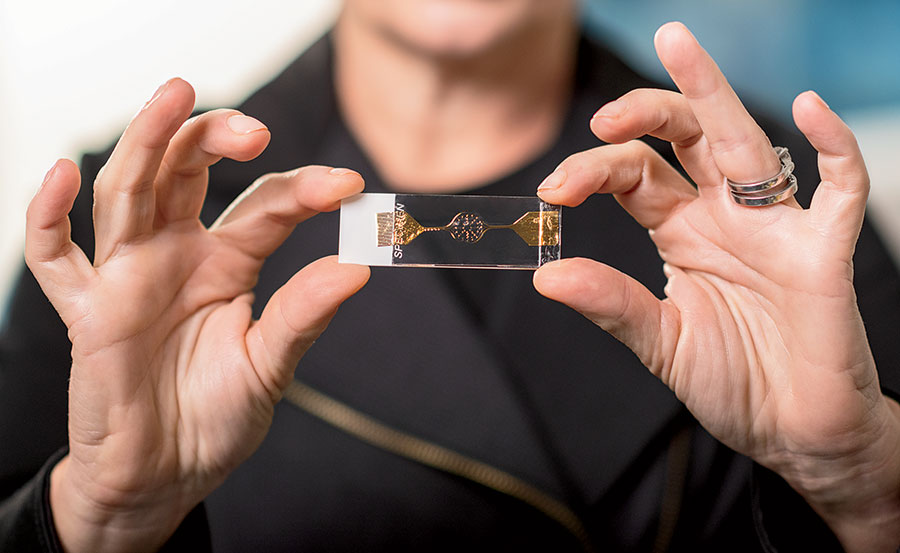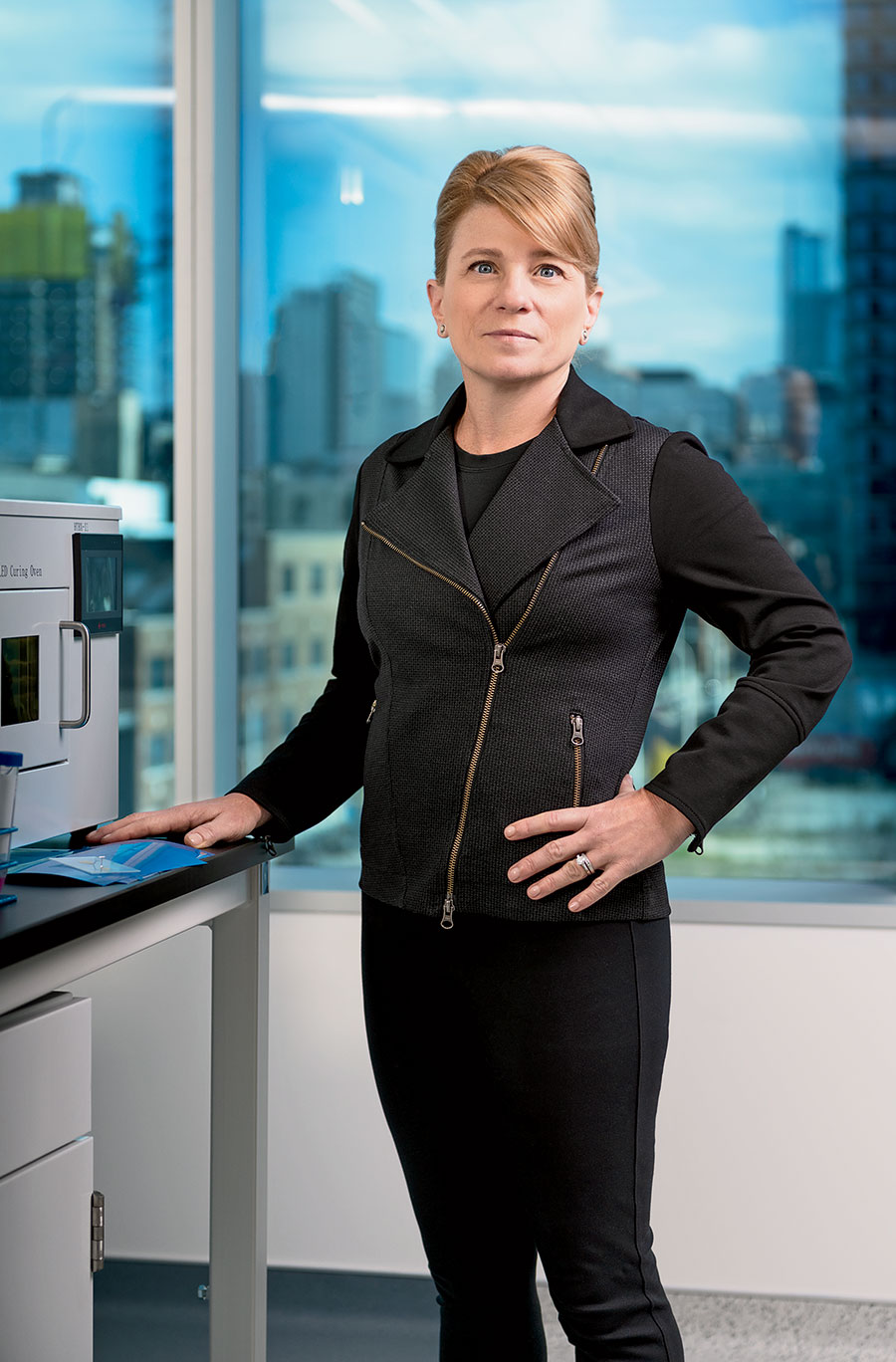This month, a team of top medical researchers, chemists, biologists, and bioengineers in Chicago will open the best bioresearch center money can buy. It’s part of a national network of such sites that, together, have a lofty goal: to cure, prevent, or manage all diseases by the end of this century. That’s the kind of ambition you can have when you are backed by billionaires.
The Chan Zuckerberg Biohub Chicago, located in Fulton Market, is funded by a $250 million grant from the Chan Zuckerberg Initiative, the philanthropic foundation set up by Facebook founder Mark Zuckerberg and his wife, Priscilla Chan. Operating out of a temporary space since October, the lab melds the state’s most esteemed scientific institutions — the University of Chicago, the University of Illinois Urbana-Champaign, and Northwestern University — to study inflammation and the immune system. Chicago was selected last March as the site, the second of what is now four CZ Biohubs, each with a different focus.
Northwestern professor of chemistry and biomedical engineering Shana Kelley, the hub’s president, talked with Chicago about what’s in store.
Of all the areas to put your hub’s focus on, why inflammation?
Inflammation is a major driver in 50 percent of all disease. With a disease like arthritis, the immune system starts attacking the lining of the joints, and that eventually causes a lot of damage and pain. But the immune system can attack, you know, the intestine. Almost every organ in the body is susceptible. We don’t really know what that initial signal is that makes the immune system jump the gun and attack healthy tissue. We have to figure that out. Right now we don’t have a good way of tracking all the things we’re exposed to every day that can inflame different parts of our body. So understanding all of those drivers will allow us to get at the diseases. We wanted a problem that cut across medical research, not just one disease or one kind of biology, but across so many different conditions that are problematic.
The competition for this hub was steep, with numerous cities around the country bidding for it. Why was Chicago chosen?
We have an incredible depth of intellectual capital here in terms of the scientists and engineers at our three partner universities and beyond. And Chicago also has this collaborative spirit. We have a committee of about 24 people from the three institutions, and we’ve all known each other for a long time. We collaborate, we work together, we’re very collegial. And that really came through to the Chan Zuckerberg Initiative, that we were ready to join forces and do something impactful.
“We’re free to pursue things here that are truly high risk, high reward. We can just reach for the stars — come up with ideas that are completely untested and pursue them.”
How is the work at the hub going to be different from what’s already taking place at the city’s top universities?
We’re free to pursue things here that are truly high risk, high reward. In universities, you have to find funding, and funding agencies can be somewhat conservative. They want you to have proven out an idea before they’ll fund it. Here, we can just reach for the stars — come up with ideas that are completely untested and pursue them.
What are your top goals?
Our overarching goal is to come up with a completely new architecture for how inflammation works in the body and how it works at the level of human tissue. So we’re trying to build new technologies that will tell us so much more about how those processes work. We’re building systems that are basically engineered human tissues where we can put together the types of architectures that you find in the human body. We can layer in different types of sensors that will tell us about what’s happening at the molecular and cellular level. We can engineer little probes that will allow us to take very small samples out of the tissue and analyze them. And then we’ll also be using machine learning and artificial intelligence to take all that information and build very comprehensive models that tell us what’s happening, second by second, right in a living tissue.
How has your background as a nanochemist, in both academia and the entrepreneurial world, prepared you for this work?
The chemist’s mindset is at the molecular level. And if we really want to understand how molecules behave, and this applies to the molecules that are running around in ourselves and doing everything that makes the human body work, we have to have methods that allow us to watch them there. They’re very small, right? It’s hard to look at them directly. And so we have to develop ways that allow us to pick up on a really faint signal that a molecule is giving off, and then shape methodologies that allow us to turn that into information so that we can tell what molecules interact with each other, how fast they’re doing different things. What happens to a molecule if you have a mutation in your DNA, and then that mutation causes a molecule to be made differently? How’s that molecule different from the normal one?
Is the Chan Zuckerberg Initiative goal of curing, preventing, or managing all diseases by the end of the century realistic?
It’s an incredibly ambitious goal, but to do things that are transformative, we have to have those kinds of goals. I’m absolutely positive that when the space program was gearing up people thought it was ridiculous to talk about sending a man to the moon. But we set the goal, and then all the technology came together to make it happen.

Tiny Tech
A key to studying inflammation is developing the necessary nanotechnology — instruments small enough and sensitive enough to measure the plethora of biochemical processes that may play a role in causing or exacerbating the inflammatory process. Shana Kelley showed off one such device that the CZ Biohub Chicago has begun producing. To the nonscientific eye, it looks like a piece of jewelry. In reality, it’s a fine mesh structure made of gold, holding minuscule sensors that can detect the presence of protein molecules in engineered human tissue and measure their quantity and ability to move. “We can actually watch these molecules move in real time,” says Kelley. “So that’s very new. That’s something nobody has ever done before.”



